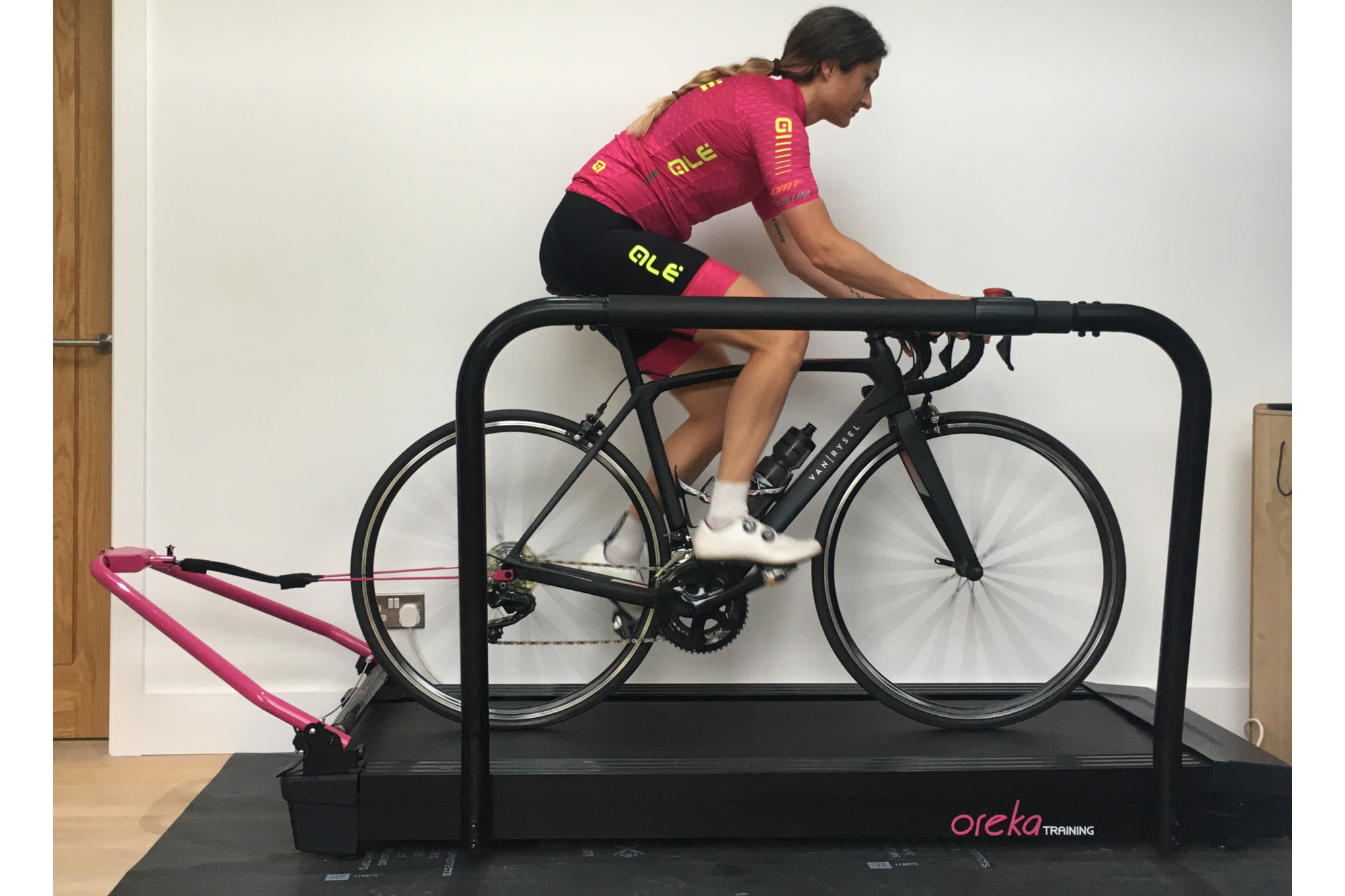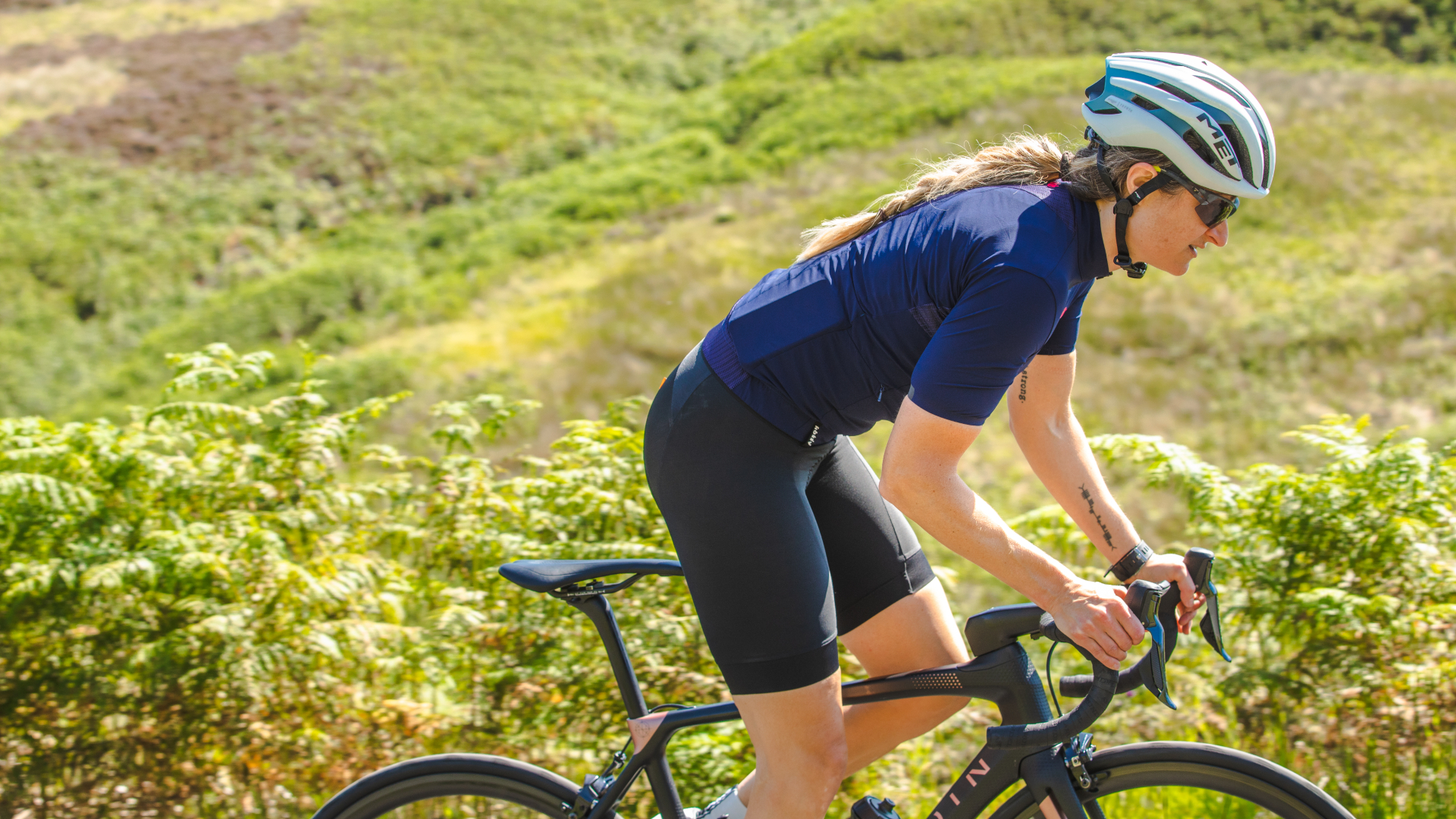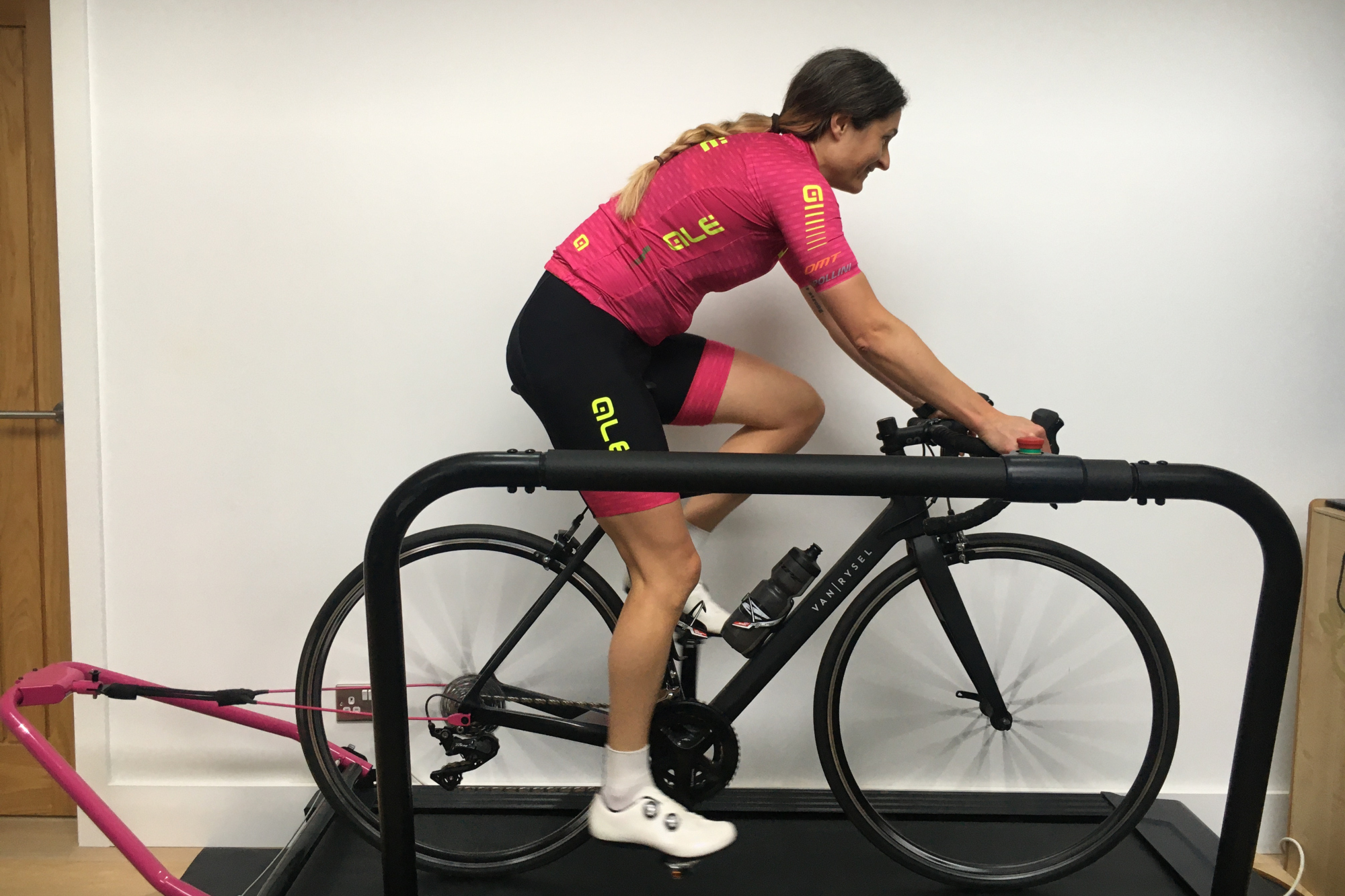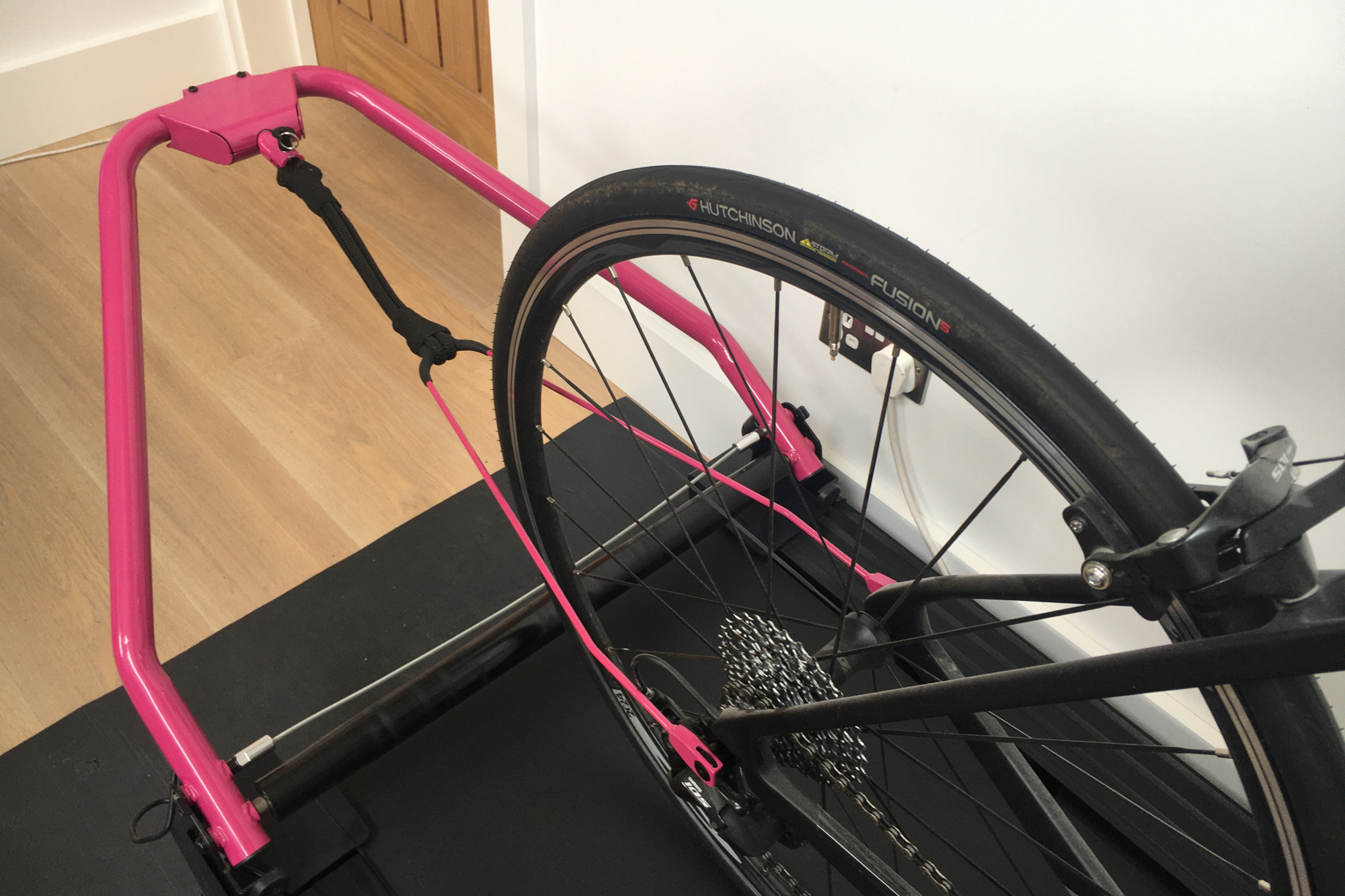Oreka 02 indoor bike trainer review
Can the Oreka 02 really be a viable option for getting the outdoors experience indoors?

The Oreka 02 has the potential to be game-changing. It offers a really great option for riders who need or want to maintain high volume rides but lack the ability to head outside. Whilst there are areas for improvement, I can certainly see myself using one long term - but I would need to ensure I had a (soundproof) space away from the home to house it.
-
+
Outdoors indoors experience
-
+
Compatibility with third party software
-
+
Real life braking
-
+
Plug and play
-
-
Emergency stop issue
-
-
Noise
-
-
Size
- -
-
-
You can trust Cycling Weekly.

If you're not riding your bike outside, then the indoor options generally fall into three camps: a turbo trainer, rollers, or a dedicated exercise bike.
There is however a fourth option - a bikemill, the biking alternative to a treadmill, like this model from Oreka.
>>> The best turbo trainers for indoor cycling: smart and standard turbo trainers reviewed ).
The Oreka 02 is a little different to a traditional treadmill, and indeed the Tacx version for cyclists, in that the rider drives the belt rather than the other way round. It uses an electromagnetic system that regulates the belt’s resistance via rollers, whilst hooking up to virtual training software, such as Zwift or Rouvey, to regulate the resistance.
>>> Oreka Training 05: the off-grid turbo trainer launched
It's also important to state here that this isn't a bikemill equivalent of a smart turbo trainer, exercise bike or otherwise. It took me a while to leave these preconceived notions at the door. The feeling is a lot more like riding outdoors and you'll move around a lot more on the bike.
This system hasn't been designed as a powermeter trainer like a smart turbo/exercise bike.
In order to control the resistance, the 02 trainer does need to estimate how much power the rider is producing via a dual sensor system. The rear sensor measures the pulling and the front sensor measures the speed. Using both sensor's data (pulling force and speed), it creates a matrix to estimate the power and control the resistance.
Nevertheless, Oreka is clear that it's not an accurate powermeter because it's unable to take the data directly from the bike or pedals, and with other factors such as tyre size and air pressure directly impacting on the pulling force the calculus would be pretty deviated anyway.
This does mean that you can jump on and ride a virtual route, but it won't be a true reflection of your input. However, the unit is both ANT+ and Bluetooth compatible, so if accurate training data is important, Oreka recommend sticking with your own powermeter for no deviation between outdoor and indoor riding and when pairing with third party software.
Unboxing
One of the biggest practical differences between the Oreca 02 and alternative smart bike trainers is the size. This isn't something that can just be propped up in a corner out the way. It needs its own dedicated space.

I set mine up in the hall for the test period, but measuring 2380cm x945cm at it longest and widest, if you're buying one to keep then the end location will need some thinking about.
Getting the 90-kilo unit into its final location is ideally a forklift manoeuvring job. I made the error of getting the delivery person to leave it on the drive on the pallet, and then realised that getting the unit inside would take an awful lot of muscle, arguably more than most cyclists would have. It's without doubt a two+ person job.
There's precious few grab holds between delicate plastic electronic protective covers and the moving rollers which makes the job harder, I think Oreka could do with offering an installation service.
Once in situ, it's only the safety bar that needs any assembly tools, a spanner and Allen (hex) keys. There will also probably be the requirement for the treadmill band adjustment, but that's a relatively straightforward 10m Allen key job.

The last set up aspect is to swap out your rear skewer/ bolt thru for the 142mmx12mm supplied one. This is a specially adapted one that enables a teather to be attached to your bike. This elasticated leash centralises you on the trainer and ultimately prevents you from riding off the front.
The guys at Oreka must have had their work cut out calculating exactly the right length and tension for it. Too long or loose and you would be able to ride off, too short or firm and it would have created an awful ride sensation, so kudos to the team for getting that just right.
At the rear of the 02 trainer is a raised barrel roller, to stop you rolling off the back of the unit. When you nudge it with your rear wheel it simply spins allowing you to continue riding forward once more.
The final part is to plug the 02 Oreka Training in, download the app and then pair with your favourite virtual reality riding software, ensuring that you select your own power meter for power date reading and the Oreka as the controllability. Note, if riding on Zwift, it's been recommended that you select Max on the 'level' setting.
The ride
Ok, so the bit you've been really waiting for - how does it feel to ride. The closest familiar feeling would be to liken the Oreka 02 to a set of rollers. There's that familiar unnerving feeling of riding a bike freely on a relatively small footprint.
The safety rail is super handy, enabling you to get riding and slowly build your confidence. But once you dial the feel, it's a rapid learning process as the ride feel swiftly becomes more natural and secure. I've not ridden rollers around seven years, but was able to ride normally on the bike (just using the bar for stopping and starting) after about a minute, and then out the saddle a minute or so after that. That's not to say that I became a fluid rider on the Oreka Training at this point, I'd say you have to rack up around 50miles or so for it to become more natural, and I'm still to master a flat out full gas sprint.
Once you start pedalling and are up to speed, around five miles an hour or so, the belt drive kicks in and you start to experience the rolling road resistance change. It's this aspect that the likes of Zwift / Rouvey/ Bkool software controls take over to mimic the road, climbs, descents and drafting.
This is also the exact point on the first ride that I realised the chosen location of the Oreka 02 wasn't ideal for homelife. The noise is best described by my six-year-old as a "jet engine on take-off".
A closed door did reduce the decibels to a constant undercurrent low hum, but my plans of post-child's bedtime social Zwifting were thwarted, as it became clear that it was, in fact, positively anti-social for the rest of my household.
In hindsight, the garage or a specifically built shed (with corresponding soundproofing for community harmony) would have been a far better location.
The ride feel is very realistic, giving you the ability to move around on the bike. This is a huge perk to the Oreka Training unit, and a massive issue overlooked when using a static trainer. There's no way you can replicate the big milage of riding outside on a static bike and expect to come away unscathed in terms of ailments (and mental fatigue). Obviously there are benefits to static intensive riding, but for rides of any endurance or exactly replicating your riding position, only your own bike with freedom of movement will do.
Unfortunately, there's no incline/decline pitch feature - something offered by the Tacx Magnum and Wahoo Kickr bike.
The other major reminder that you’re not outside is the bungie leash and rear roller encounter. It does get better over time, but I now know what a dog feels like on a retractable lead. When you’re pressing on, it feels a little like a mate holding on to your saddle. Easing up on the pedals also doesn’t correspond with an instant easing up of the belt speed, which, depending on the force applied to the elasticated leash, recoils you with some voracity into the rear roller, creating a rebound effect until momentum subsides.
You need to keep your wits about you, and personally I've struggled to get everything out on the trainer through fear of not having the mental or physical capabilities to respond to this pin-balling, but it certainly gets more natural over time and the whole feel of the ride significantly improves the more you ride the Oreka 02.
When using online platforms, the belt resistance is instantaneous in terms of reacting to course/route details, with features like drafting noticeable. Whilst the trainer may not pitch up or down to represent gradients, there's no power limitation and there are also no limitations on the feel of inclines or declines. As the belt resistance increases and becomes harder to ride against, you naturally gravitate to the hoods - as you would on a climb, and, as the resistance lowers, back to the drops once over the top.
This outdoor riding indoor experience also extends to real-life braking. It's a feature that seems always on the cusp of the next iteration/software updates of most cycling apps, RGT (Road Grand Tours) is by far the most advanced on this, but good to know that the system is totally future-proofed for all apps.
Stay Alert
Just as in the real world, it's important that you totally stop the wheels before disembarking.
If you don't, the treadmill will increase in speed, believing that you are still powering it. I discovered this having failed to do so, standing on the edge of the belt, just out of reach of the emergency stop button.
I've raised the issue with the team at Oreka. I believe the trainer does require a warning sticker, acting as a constant reminder to stop before disembarking and a note of the need to do so in the user manual.
My nagging concern, however, is that this could happen if you suffer a medical problem, or fall. I realise that a running treadmill is exactly the same, although that doesn't become progressively faster, and it is often mitigated by the use of a magnetic safety lanyard that would cut the power circuit once pulled.
Obviously lanyard and bikes entanglement probably pose an even bigger safety threat; a neater fix could be poaching technology from the helmet world, where devices detect a crash and act accordingly. The chances are that any fall would clear you and the bike from the moving belt entirely, but it still plays on my mind.
Value
There's a few ways of looking at the value of the Oreka Trainer. It is a big expense and without a doubt it's a marmite product in the main.
For someone with the perfect space, a big screen, decent headphones and who spends at least a third of the year suffering from bad cycling weather or (or a global pandemic) then the Oreka 02 Trainer is great. Really great. The ability to actually ride your own bike like you would on a road is a huge perk in terms of keeping a high level of endurance riding without risking injury or de-training the exact muscle groups.
However, the Oreka Training unit isn't without flaw. I for one would rather see a small price hike, with my safety concerns over the stopping feature addressed.

Thank you for reading 20 articles this month* Join now for unlimited access
Enjoy your first month for just £1 / $1 / €1
*Read 5 free articles per month without a subscription

Join now for unlimited access
Try first month for just £1 / $1 / €1
Get The Leadout Newsletter
The latest race content, interviews, features, reviews and expert buying guides, direct to your inbox!
Hannah is Cycling Weekly’s longest-serving tech writer, having started with the magazine back in 2011. She has covered all things technical for both print and digital over multiple seasons representing CW at spring Classics, and Grand Tours and all races in between.
Hannah was a successful road and track racer herself, competing in UCI races all over Europe as well as in China, Pakistan and New Zealand.
For fun, she's ridden LEJOG unaided, a lap of Majorca in a day, won a 24-hour mountain bike race and tackled famous mountain passes in the French Alps, Pyrenees, Dolomites and Himalayas.
She lives just outside the Peak District National Park near Manchester UK with her partner, daughter and a small but beautifully formed bike collection.
-
 'This is the marriage venue, no?': how one rider ran the whole gamut of hallucinations in a single race
'This is the marriage venue, no?': how one rider ran the whole gamut of hallucinations in a single raceKabir Rachure's first RAAM was a crazy experience in more ways than one, he tells Cycling Weekly's Going Long podcast
By James Shrubsall Published
-
 Full Tour of Britain Women route announced, taking place from North Yorkshire to Glasgow
Full Tour of Britain Women route announced, taking place from North Yorkshire to GlasgowBritish Cycling's Women's WorldTour four-stage race will take place in northern England and Scotland
By Tom Thewlis Published
-
 Positive signs for UK bike industry as Halfords cycling sales grow
Positive signs for UK bike industry as Halfords cycling sales growRetailer admits that the impact of Donald Trump's tariffs remains to be seen
By Tom Thewlis Published